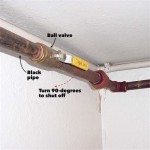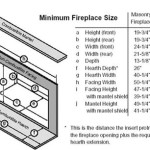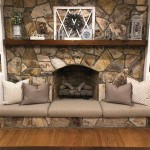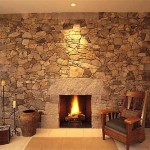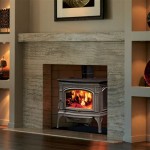Whitewash Brick Fireplace: A Timeless Transformation
A brick fireplace is often a focal point in a home, radiating warmth and character. However, the existing brick color might not always align with the desired aesthetic. Whitewashing offers a transformative solution, lightening the brick while preserving its texture and adding a touch of rustic charm. This article will discuss the process of whitewashing a brick fireplace, addressing key considerations, preparation, application, and maintenance.
Understanding the Whitewashing Technique
Whitewashing, at its core, is a diluted paint treatment typically applied to brick or wood surfaces. It differs significantly from simply painting the brick, as the goal isn't to completely obscure the underlying material. Instead, whitewashing allows the natural texture and variations of the brick to peek through the paint, creating a softer, more nuanced appearance. The level of opaqueness can be adjusted by altering the ratio of paint to water, allowing for a range of effects from a subtle wash to a more pronounced, near-solid color.
The appeal of a whitewashed brick fireplace lies in its ability to brighten a room while maintaining the inherent character of the brick. Dark, red brick can sometimes feel heavy or outdated, especially in rooms with limited natural light. Whitewashing provides a visual lift, creating a lighter and more airy feel. The technique also complements a variety of interior design styles, ranging from farmhouse and rustic to modern and minimalist.
Furthermore, whitewashing is a relatively straightforward and cost-effective way to update a fireplace compared to other renovation options, such as refacing or replacing the entire structure. With careful preparation and the right materials, homeowners can often achieve professional-looking results themselves.
Preparation is Paramount: Ensuring a Successful Whitewashing Project
Proper preparation is essential for a successful whitewashing project. This stage involves cleaning the brick, patching any imperfections, and protecting surrounding areas. Neglecting these steps can lead to uneven application, poor adhesion, and ultimately, an unsatisfactory outcome.
The first step is thoroughly cleaning the brick surface. Over time, fireplaces accumulate soot, dust, and grease, which can prevent the whitewash from adhering properly. Using a stiff-bristled brush and a mixture of mild detergent and water, scrub the brick thoroughly, paying particular attention to areas with visible stains. Rinse the brick with clean water and allow it to dry completely, ideally for at least 24 hours. For stubborn soot stains, a specialized brick cleaner might be necessary.
After cleaning, inspect the brick for any cracks, chips, or missing mortar. These imperfections should be repaired before applying the whitewash. Patch any cracks with a suitable mortar repair compound, following the manufacturer's instructions. Allow the repair compound to dry and cure completely before proceeding.
Protecting surrounding areas is crucial to avoid unwanted paint splatters. Cover the floor around the fireplace with drop cloths, and use painter's tape to mask off walls, mantels, and any other areas that need to be protected. Remove any decorative items from the mantel and surrounding area.
Finally, gather all necessary materials and tools. This includes the paint, water, buckets, mixing sticks, brushes (both wide and narrow for detail work), sponges, rags, and protective gear such as gloves and eye protection.
The Whitewashing Process: Application Techniques and Considerations
The actual whitewashing process involves mixing the paint, applying the wash to the brick, and achieving the desired level of opaqueness. Careful attention to detail and a systematic approach are essential for achieving a professional-looking result.
The first step is to prepare the whitewash mixture. The ratio of paint to water will determine the opaqueness of the wash. A common starting point is a 1:1 ratio (one part paint to one part water), but this can be adjusted to achieve the desired effect. For a more subtle wash, use a higher proportion of water; for a more opaque finish, use less water. It is best to start with a more diluted mixture and gradually increase the paint concentration if needed. Thoroughly mix the paint and water until the mixture is smooth and consistent. Semigloss or satin latex paint is often recommended, but matte paint can also be used depending on the desired finish. Always use a paint specifically designed for masonry surfaces.
Before applying the whitewash to the entire fireplace, test the mixture on a small, inconspicuous area to ensure the desired color and effect are achieved. Once satisfied, begin applying the whitewash to the brick using a wide brush or a sponge. Work in small sections, applying the wash evenly to the surface. Pay attention to the mortar joints, ensuring they are adequately covered. If using a brush, use long, even strokes to avoid leaving brush marks. If using a sponge, dab the wash onto the brick for a more textured effect.
After applying the whitewash, allow it to sit for a few minutes. The length of time will depend on the desired level of opaqueness. For a more subtle wash, wipe off the excess paint with a damp rag or sponge after a minute or two. For a more opaque finish, allow the wash to sit for a longer period before wiping. Experiment with different techniques to achieve the desired look. Some homeowners prefer to leave the wash untouched, resulting in a more solid color. Others prefer to wipe off the wash in certain areas to create a distressed or aged effect.
Repeat the application process as needed to achieve the desired level of opaqueness. Allow each coat to dry completely before applying the next. Typically, one or two coats are sufficient, but more coats may be necessary for a more opaque finish.
Once the final coat has dried completely, carefully remove the painter's tape and inspect the finished product. Touch up any areas that need attention with a small brush. Allow the whitewashed fireplace to cure for several days before exposing it to heat.
Key Considerations for Choosing the Right Paint and Achieving the Desired Aesthetic
Selecting the appropriate paint and understanding its impact on the final aesthetic is crucial for achieving the desired outcome when whitewashing a brick fireplace. The type of paint, its sheen, and even its undertones can significantly affect the overall look.
The choice of paint type is paramount. Latex paint designed for masonry is generally recommended due to its flexibility, durability, and ease of application. Latex paint is water-based, making it easier to clean up and less prone to cracking or peeling compared to oil-based paints. While oil-based paints offer excellent adhesion and durability, they are more difficult to work with, require harsher solvents for cleaning, and can yellow over time. Acrylic latex paints are also a good option, offering excellent weather resistance and color retention.
The paint sheen also plays a significant role in the final aesthetic. A matte finish will create a softer, more traditional look, while a semigloss or satin finish will provide a slight sheen, making the brick appear more modern and easier to clean. High-gloss paints are generally not recommended for whitewashing brick fireplaces as they can appear too shiny and unnatural.
Considering the undertones of the paint is also important. While "white" might seem like a straightforward color choice, it exists in a wide range of shades with varying undertones. Cool whites have blue or gray undertones, while warm whites have yellow or beige undertones. The choice of undertone should complement the existing colors in the room and the overall design style. For example, a warm white might be a better choice for a room with warm tones, while a cool white might be more suitable for a room with cool tones.
Before committing to a particular paint color, it's advisable to test several different samples on a small, inconspicuous area of the brick. This will allow for evaluating the color, sheen, and overall effect in different lighting conditions. It also provides an opportunity to experiment with different whitewashing techniques and ratios of paint to water.
Ultimately, the choice of paint and whitewashing technique should be driven by personal preference and the desired aesthetic. With careful planning and execution, a whitewashed brick fireplace can transform a room and create a stunning focal point.

Whitewash Your Brick Fireplace With Limewash Paint Romabio

Whitewash A Brick Fireplace

Whitewashed Brick Fireplace Update Our Tiny Nest

How To Whitewash Fireplace Brick Allisa Jacobs

How To Whitewash A Brick Fireplace Easiest Method For 2024

Ten Things To Know Before You Whitewash Your Brick Re Invintage Home

How To White Wash Brick Fireplace Makeover Crafty Morning

How To Whitewash Brick Sand And Sisal

An Easy Diy How To Whitewash A Brick Fireplace 1905 Farmhouse

How To Whitewash A Brick Fireplace For Under 50 Her Heartland Soul
Related Posts


